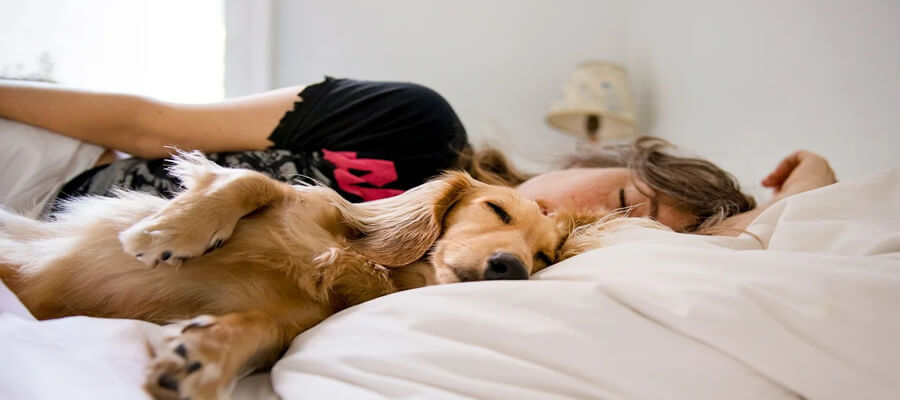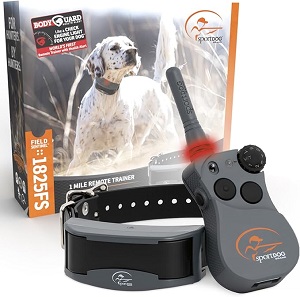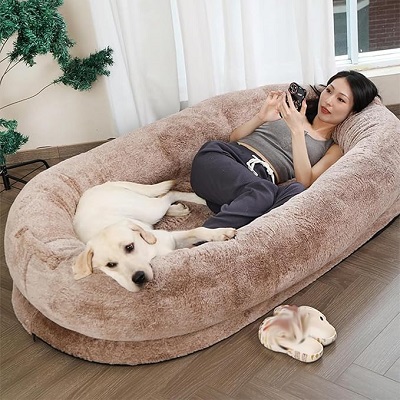
How to Understand Your Dog’s Sleeping Positions
Understand Your Dog’s Sleeping Positions
Introduction
Dogs spend a significant portion of their lives sleeping—anywhere from 12 to 14 hours a day! But what’s more interesting than the amount of time they sleep is how they sleep. From curling up in a ball to sprawled out on their back, your dog’s sleeping position can reveal a lot about their comfort, mood, and even health. In this article, we’ll explore the most common dog sleeping positions and what they might mean, helping you better understand your furry companion’s behavior and well-being.
1. The Curled-Up Ball
What It Looks Like:
In this position, your dog curls up tightly, with their head resting on their tail and limbs tucked under their body. This position is one of the most common ways dogs sleep, especially in colder weather or unfamiliar environments.
What It Means:
When dogs sleep curled up in a ball, they’re instinctively protecting their vital organs and conserving body heat. This position is a sign that your dog might be feeling a little cautious or unsure about their environment, especially if they’re in a new place or if there’s a lot of noise around. It also helps them stay warm, making it a common sleeping posture during colder months.
How to Respond:
If your dog regularly sleeps curled up, ensure they have a warm, comfortable bed and feel safe in their environment. While this position is completely natural, if your dog always sleeps like this even when it’s warm or safe, they might need reassurance and comfort to help them fully relax.
Essentials for Your Newly Adopted Pet
Welcoming a shelter pet into your life is a beautiful journey. Here are some handpicked items to help your new friend feel safe, loved, and right at home:
2. The Side Sleeper
What It Looks Like:
When your dog sleeps on their side, their legs are stretched out, and they look relaxed, lying flat on one side of their body. This is a common sleeping position for dogs when they feel comfortable and secure.
What It Means:
A dog that sleeps on their side is typically very relaxed and at ease in their environment. This position exposes their belly and vital organs, signaling trust and comfort. Side sleeping often happens when dogs are in deep sleep, and it’s a good indication that your dog feels safe, happy, and at peace in their surroundings.
How to Respond:
There’s no need to worry if your dog frequently sleeps on their side. In fact, this is a great sign that your dog is content and feeling well-rested. Just make sure they have a soft, supportive surface to sleep on to avoid any strain on their joints.
3. The Superman (or Sploot)
What It Looks Like:
In this position, your dog lies on their belly with their front legs stretched out in front and their back legs extended straight behind them, resembling a flying superhero. This is often referred to as “splooting.”
What It Means:
Dogs that sleep in the Superman position are typically in a light, relaxed sleep or resting state. This position allows them to quickly jump up if they hear a sound or need to respond to something. It’s often seen in playful, energetic dogs who are simply taking a quick rest in between bouts of activity.
How to Respond:
This position is common in puppies and energetic breeds like Corgis and French Bulldogs. It’s a sign that your dog is feeling playful and energetic, even while resting. If your dog frequently sploots, it’s a good indication they’re active and healthy.
4. The Belly-Up (or Crazy Legs)
What It Looks Like:
In the belly-up position, your dog lies on their back with their paws in the air, exposing their belly. Their legs may be splayed out at awkward angles, often referred to as the “crazy legs” position.
What It Means:
A dog that sleeps belly-up is displaying complete relaxation and trust in their environment. This position is incredibly vulnerable, as it exposes their stomach and vital organs, so only dogs that feel extremely comfortable and secure will sleep this way. It also allows them to cool off, which is why you might see your dog in this position more often in warmer weather.
How to Respond:
When your dog sleeps belly-up, it’s a sign that they are completely at ease and trust you and their surroundings. This is one of the most relaxed positions a dog can adopt, and there’s no need for concern. If you see this often, you’re likely providing your dog with a very comfortable, loving home.
5. The Donut
What It Looks Like:
In the donut position, your dog curls up into a tight, circular ball, resembling a donut. This position is similar to the curled-up ball, but even more compact and secure.
What It Means:
This position is another one that helps conserve body heat and protect vital organs. It’s a position dogs often adopt when they’re feeling cold or trying to protect themselves. If your dog sleeps like this frequently, they might be trying to stay warm, or they might be feeling anxious or protective of their space.
How to Respond:
If your dog sleeps in the donut position in a warm, safe environment, they may need extra reassurance. Provide them with a cozy bed and try to alleviate any stress or anxiety in their environment. Otherwise, this is a natural position that allows your dog to feel secure and protected.
6. The Lion’s Pose (or Sphinx)
What It Looks Like:
In this pose, your dog rests on their belly with their front paws stretched out in front and their head resting on top of their paws. Their back legs are often tucked underneath their body.
What It Means:
The lion’s pose is a common resting position for dogs who are not fully sleeping but are relaxing while staying alert. This position allows them to quickly spring into action if needed. It’s often seen in dogs that are guarding or protecting their home or family and are in a state of light sleep or rest.
How to Respond:
If your dog frequently sleeps in the lion’s pose, it’s likely they’re feeling protective or watchful over their environment. This is a natural behavior, especially in breeds known for guarding tendencies, like German Shepherds or Dobermans. You can help them relax by ensuring they feel safe and secure in their surroundings.
7. The Cuddler
What It Looks Like:
The cuddler position involves your dog curling up next to or on top of you, other pets, or soft objects like pillows or blankets. They might rest their head on you or burrow into you for warmth and comfort.
What It Means:
Dogs that sleep in the cuddler position are seeking warmth and emotional connection. This behavior often reflects a strong bond between you and your dog. Dogs that cuddle with you while they sleep feel secure, loved, and close to you, which reinforces their pack mentality.
How to Respond:
Enjoy the bonding time! Dogs that cuddle are demonstrating love and affection. If your dog seeks to cuddle, provide them with a safe, warm space where they feel close to you. These moments are great for strengthening your bond and providing emotional reassurance to your dog.
8. The Back-to-Back (or Tush-to-Tush)
What It Looks Like:
In this position, your dog may sleep back-to-back with you, another dog, or even a favorite stuffed toy. Their back or rear will be pressed against something or someone, often with their legs stretched out or slightly curled.
What It Means:
Dogs that sleep back-to-back are displaying a pack-oriented behavior that goes back to their wild ancestors. In the wild, dogs and wolves would sleep this way to show trust and maintain warmth within the pack. By sleeping with their back against you or another pet, your dog is signaling that they trust you completely and consider you part of their family.
How to Respond:
This position is a sign of affection and trust, so if your dog likes to sleep back-to-back with you, it’s a good indication of their bond with you. Let them sleep comfortably, knowing that this behavior signifies deep loyalty and connection.
Conclusion
Your dog’s sleeping positions can reveal a lot about their mood, comfort, and trust in their environment. From the relaxed belly-up position to the protective curled-up ball, each position reflects different aspects of your dog’s feelings and needs. Understanding these positions can help you better interpret your dog’s behavior, allowing you to provide them with the care and comfort they need. Whether they’re sleeping in a cozy ball or sprawling out with crazy legs, your dog’s sleeping habits are a window into their world of relaxation and security.
Affiliate Products
We may earn a small commission when you shop through our links — it helps us keep sharing love and care for every dog out there, at no extra cost to you.
Up to 75% Discount

Dog Collar with Health Monitoring
BUY NOW »
Up to 55% Discount

Luxury Faux Furhuge Napping Bed
BUY NOW »

